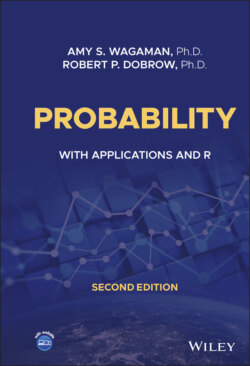Читать книгу Probability - Robert P. Dobrow - Страница 37
1.9 A FIRST LOOK AT SIMULATION
ОглавлениеUsing random numbers on a computer to simulate probabilities is called the Monte Carlo method. Today, Monte Carlo tools are used extensively in statistics, physics, engineering, and across many disciplines. The name was coined in the 1940s by mathematicians John von Neumann and Stanislaw Ulam working on the Manhattan Project. It was named after the famous Monte Carlo casino in Monaco.
Ulam's description of his inspiration to use random numbers to simulate complicated problems in physics is quoted in Eckhardt [1987]:
The first thoughts and attempts I made to practice [the Monte Carlo method] were suggested by a question which occurred to me in 1946 as I was convalescing from an illness and playing solitaires.
The question was what are the chances that a Canfield solitaire laid out with 52 cards will come out successfully? After spending a lot of time trying to estimate them by pure combinatorial calculations, I wondered whether a more practical method than “abstract thinking” might not be to lay it out say one hundred times and simply observe and count the number of successful plays. This was already possible to envisage with the beginning of the new era of fast computers, and I immediately thought of problems of neutron diffusion and other questions of mathematical physics, and more generally how to change processes described by certain differential equations into an equivalent form interpretable as a succession of random operations. Later [in 1946], I described the idea to John von Neumann, and we began to plan actual calculations.
The Monte Carlo simulation approach is based on the relative frequency model for probabilities. Given a random experiment and some event , the probability is estimated by repeating the random experiment many times and computing the proportion of times that occurs.
More formally, define a sequence where
for . Then
is the proportion of times in which occurs in trials. For large , the Monte Carlo method estimates by
(1.7)
